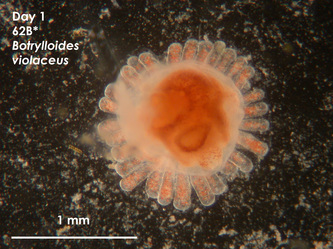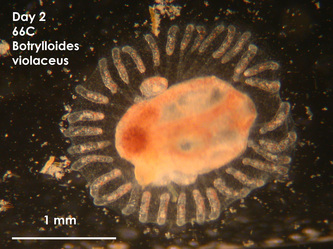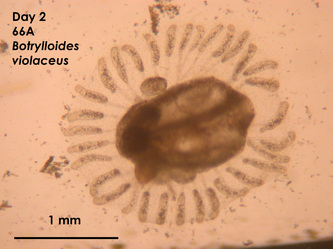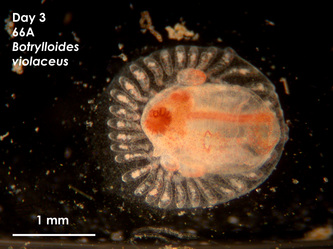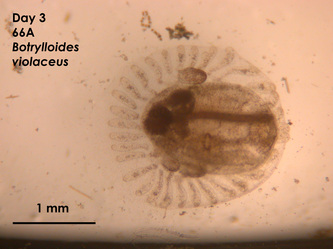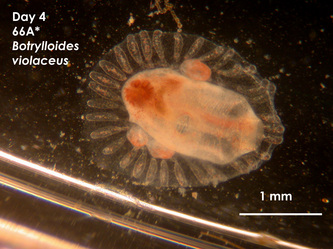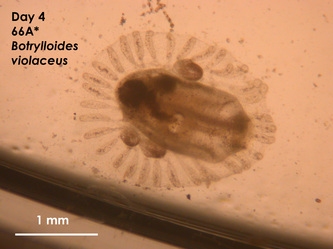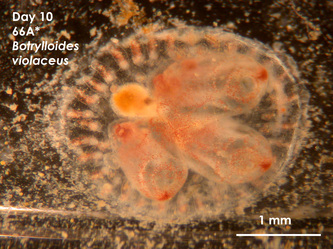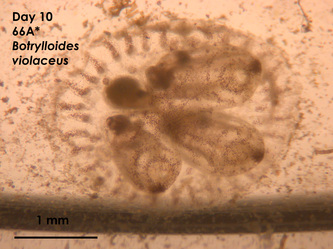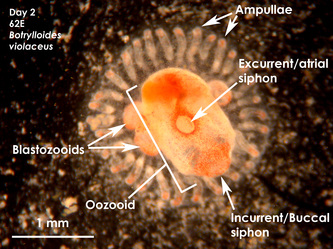Botrylloides violaceus
This brightly colored colonial ascidian is generally quite large and one of the first organisms to settle on a new surface. Botrylloides violaceus is easy to distinguish because of its numerous ampullae and its large size (>1mm). When it first settles, the observer may see a residual tail from metamorphosis. This tail will be reabsorbed into the animal body. Within the first 48 hours, Botrylloides violaceus will form an incurrent and excurrent siphon and begin feeding. Cilial movements within the organism suck water and food particles into the pharyngeal basket, and the motion of the cilia can be seen under the microscope.
Anatomy of Botrylloides violaceus
Oozooid- the juvenile ascidian which arises from the larva; the original zooid before asexual reproduction begins
Blastzooid- budding clones of the original zooid (oozoid)
Ampullae- finger-like projections within the tunic surrounding the site where the juvenile attaches to the substrate
Atrial/Excurrent Siphon- a tube through which water and excrement exits the body
Buccal/Incurrent Siphon- a tube through which water and food particles enters the body
Larval tail- the larval form of ascidians has a tail which gets reabsorbed during the juvenile stage, usually within a day after settlement
Blastzooid- budding clones of the original zooid (oozoid)
Ampullae- finger-like projections within the tunic surrounding the site where the juvenile attaches to the substrate
Atrial/Excurrent Siphon- a tube through which water and excrement exits the body
Buccal/Incurrent Siphon- a tube through which water and food particles enters the body
Larval tail- the larval form of ascidians has a tail which gets reabsorbed during the juvenile stage, usually within a day after settlement
